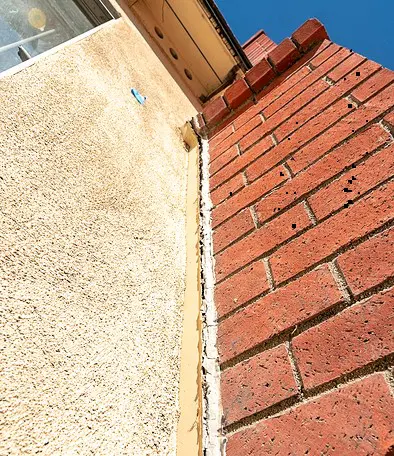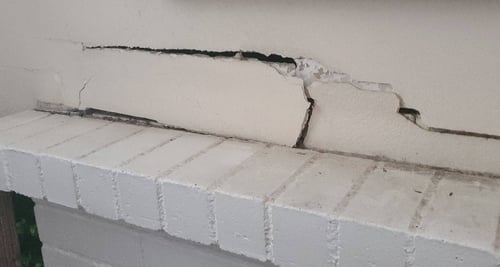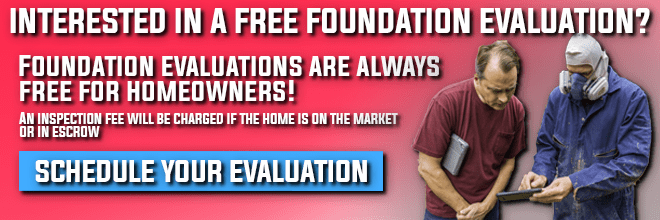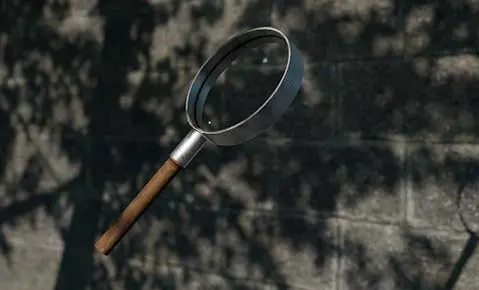Chimneys have long been considered a quintessential feature of the classic American home. There are few things in life that make you feel cozier or more relaxed than a stoked fire cracking wooden knuckles in the hearth.
Chimneys are prevalent throughout Southern California and Central Arizona (what we here at Dalinghaus Construction Inc. are proud to consider our backyard).
And, turns out, where there’s smoke, there are often leaning chimneys.
While it might be easy to blame Santa for displacing your chimney, foundation settlement is more likely the culprit than Father Christmas. Either way, leaning chimneys are not just an eyesore.
They can be indicative of structural and/or foundational damage. Leaning chimneys are also an issue because:
- They create a gap for moisture, mold, and vermin to enter your home
- They are a potential fire hazard
- They are a potential health/legal risk due to falling bricks/mortar debris
So, if you’re reading this article and your chimney is currently leaning – this article is for you. In this blog, we are going to go over the whys of chimney leaning so that we can better understand the appropriate method of repair.
In this article, we are going to cover:
- Signs of Leaning Chimneys
- Causes of Leaning Chimneys
- How to fix Leaning Chimneys
So, let’s dive right in.

Signs of Chimney Tilting
Chimneys almost always have their own foundation and or footing. And usually, it’s not built up to par with the rest of the foundation Just like there are specific signs and symptoms to look for in foundation settlement and foundation upheave.
There are a variety of signs and symptoms to look for when determining if your chimney is leaning/suffering from structural complications.
- The chimney is tilting, pulling away from the home at an off-kilter angle, creating a gap between your home and the brick allowing easy access for rain, rodents, and mold. *Note – this is typically more visible towards the top of the chimney.
- The chimney leaks when it rains, wet spots emerge on the walls directly adjacent to the chimney, and a white ash stain emerges on the exterior brick where ash is leaking through instead of going up and out.
- Smoke remains indoors when a fire is lit, caused by improper insulation, the wind pushing the smoke back into the home.
- The bricks/mortar decay and crumble, leaving fallout around the base of the exterior chimney and further loosening bricks.
- There is caulking in the gap between the leaning chimney and the home, pointing to a DIY fix of a previous owner.
- The chimney has pulled away from misshaped flashing.
Causes of Leaning Chimneys
Chimneys tilt for a variety of reasons, the majority of which have to do with the foundation the chimney was built upon.
The Chimney was Poorly Constructed
If a chimney was not built by competent professional masons or substandard mortar and brick was utilized during installation.
Masonry Issues
Age wears away at us all and brick chimneys are no exception.
Chimneys worn down by the sands of time have decayed mortar & bricks and/or missing bricks, which can unbalance the chimney and incur leaning.
Missing Footing
Homes built in yesteryear don’t always have a concrete chimney footing. Without this footing, the heavy brick chimneys are likely to tilt or sink away from the home.
Weak/Compromised Footing
Occasionally, the chimney footing is too slim or not buried deep enough and may therefore crack/crumble underneath the considerable weight of the stacked brick and mortar.
Footings constructed of subpar material are more susceptible to fracture. A fractured footing is a prevalent cause of tilting chimneys.
In general, the footing should be one-foot-thick at a bare minimum and extend six inches beyond the chimney on all sides. In addition, footings should be well below the frostline.
Expanding Soil
Expanding soil (soil that changes due to water content) can cause a chimney’s footing to sink, pull away from the home. Also, soil displacement and erosion are often to blame.
Lack of Proper Water Drainage
If the grade doesn’t angle down and away from the structure (and there are no rain-gutters), precipitation won’t drain correctly.
The weight of the water-soaked dirt pushing against the footing may cause the chimney to fracture.
How to Fix Leaning Chimneys
More often than not, your leaning chimney is caused by a foundational problem. We can fix that just like we fix foundation settlement on your home with push piers or helical piers, although, helical piers are the industry favorite.
The utilization of these helical piers brings your chimney back up to maximum practical recovery.
Helical Piers are driven into the ground until they reach competent, load-bearing soil. Then they are attached to a remedial bracket, which is attached to the manicured chimney footing.
The chimney is then lifted back into place to fit snugly against the house. The remaining gap (if there is one) is re-caulked and you are right as rain. And, if you repair your chimney through Dalinghaus Construction Inc., your chimney is covered by our lifetime warranty.
Fun Facts with Brian – Helical Piers can be used to prevent foundation uplift as well as foundational settlement.

Chim chim cher-ee
So, now you know what to look for when determining if your chimney is failing: gaps, tilting, leaks, decay, and interior smoke.
In addition, you also have a good idea of what causes leaning chimney syndrome: expansive soils and footing issues. Finally, you know what the best way to fix a chimney is through helical utilization.
If you are a push pier or helical pier enthusiast and frequent our blog on a regular basis – we dig it. Keep expanding your knowledge on all-things-foundation-repair.
If you live in our backyard of Southern California or Central AZ and need a professional opinion about your chimney or foundation, click on the link below for a FREE foundation inspection –








2 Responses
The chimney is tilting, pulling away from the home at an off-kilter angle, creating a gap between your home and the brick.
I realize that the chimney probably has a foundation problem.
Thanks for explaining how hiring a masonry expert could help you avoid the problems of poorly built chimneys. I find it alarming that this can affect the lifespan of your chimney and it can become a fire hazard! I’ll keep your suggestion in mind and seek out a masonry expert who can help me when I build a home with a fireplace.